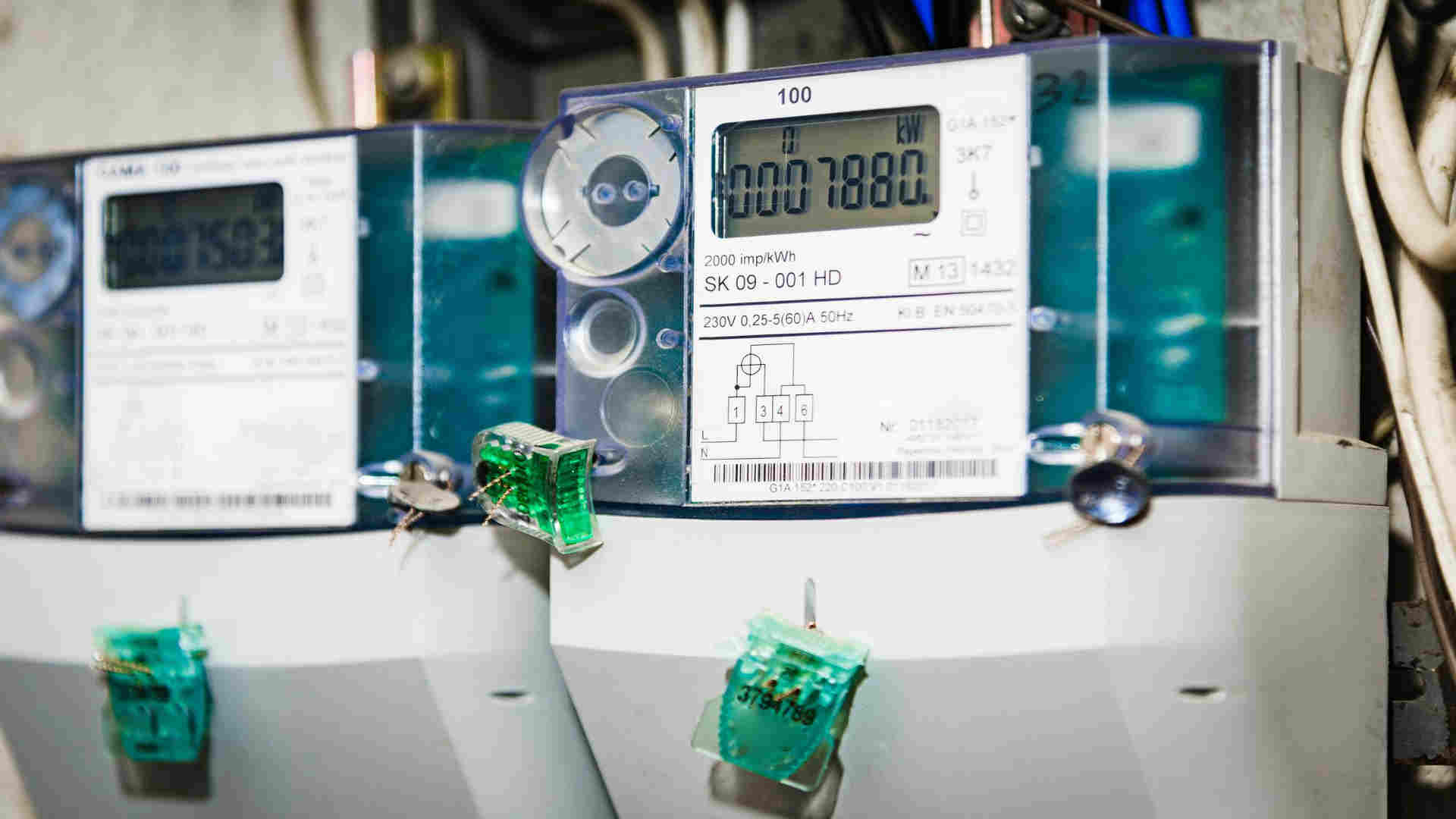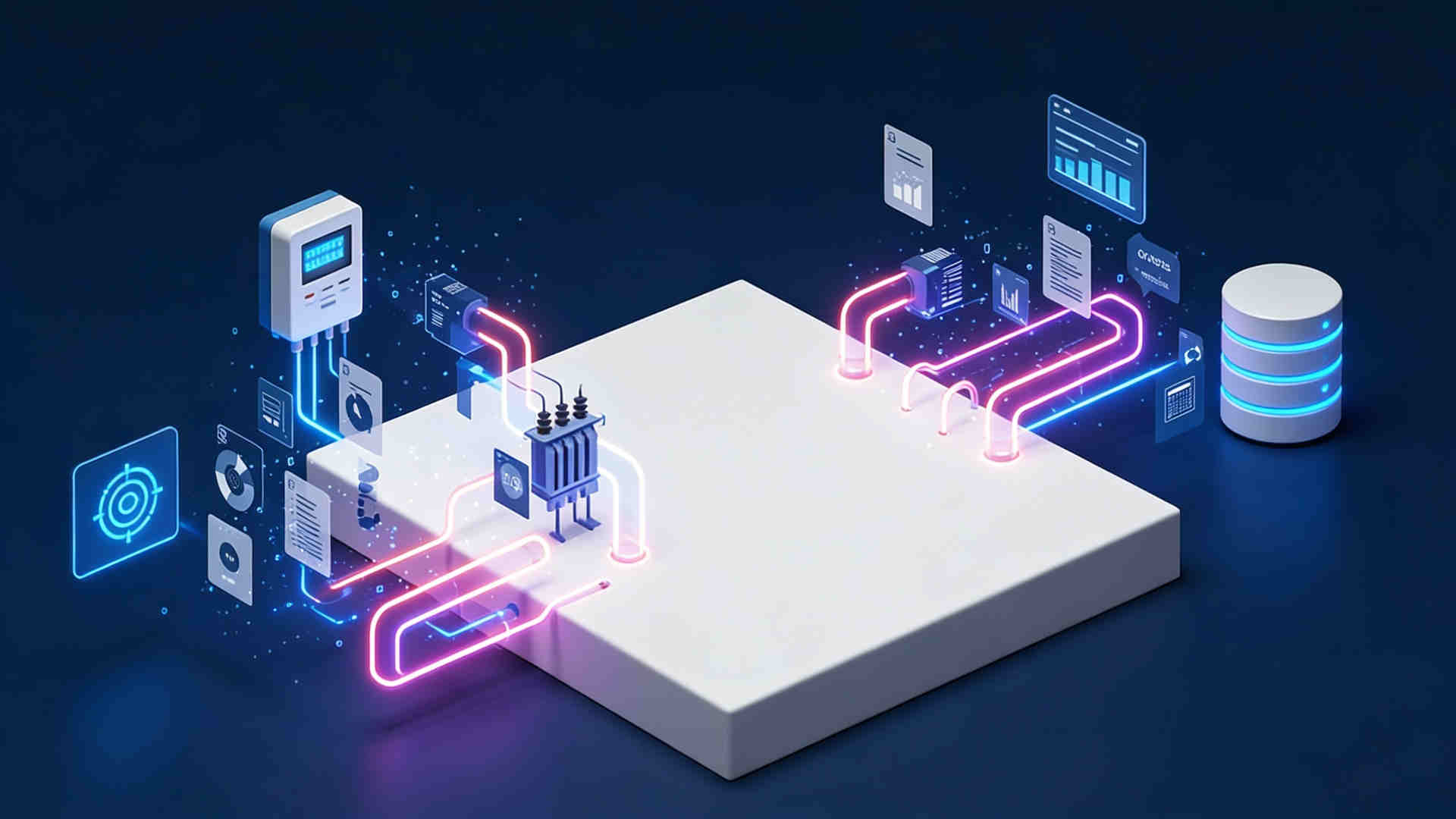What is Smart Metering?
Smart metering refers to the use of connected devices to record electricity, water or gas consumption at regular intervals. These ‘smart’ devices support bidirectional communication flow with the utility network, supporting near real-time operations, and more accurate billing.
Why they matter for utilities:
- Quicker responses: Utilities can now act within minutes to solve if anything goes wrong
- Accurate billing: With real-time usage tracking, estimation is eliminated, minimizing errors and reducing potential disputes
- Improved consumer engagement: Factors like real-time usage alerts, time-of-use pricing, etc, provide end customers with greater transparency
This creates a level of visibility that simply didn’t exist with legacy meters. Utility personnel no longer have to manually visit locations and conduct monthly readings. For example, electricity meters collect and transmit data every 15-30 minutes. Now, if a meter reports zero consumption for a long period, the system automatically triggers:
- An outage alert for back end and field personnel
- Automated work order for the field crew
- Notifications and alerts for the consumer regarding the issue
Smart meters turn raw data into actionable information, in near real-time, and on-demand.
How Does Smart Metering Work?
Thousands or even millions of smart meters are generally connected within a network, bringing both the utility and consumers closer to their data.
But, how do they actually work? We have listed the process below, step by step.
Data capturing
Smart meters measure consumption along with other diagnostic signals. These include voltage levels, tampering attempts or operational issues. This data is real-time, granular, time-stamped and linked to details like address or device ID.
Secure data transmission
Smart metering devices send data to the utility HES through various communication network. The type of communication network depends on the geography and utility requirements.
- RF Mesh is more preferable in dense urban areas due to higher resilience
- PLC uses power lines for communication purposes and is preferable in semi-urban regions due to its cost effectiveness
- LTE/NB-IoT is ideal for reliable wireless communication, and designed for low power consumption, enabling long battery life for smart meters
- LoRaWAN is relatively new in smart metering, connecting meters up to 30 miles away and providing geolocation for tracking without GPS
Data validation
Once the data is transmitted, it goes through a validation process in the MDMS (Meter data management system). The system applies set rules and checks to detect anomalies and irregular signs such as:
- Sudden voltage spikes
- Meter ID mismatch
- Duplicate entries
- Incomplete records
Once validated, the data is pushed forward to other utility systems. This step is critical to ensure operational integrity and avoid billing disputes.
Operational Control Layer
Validated data is transformed into actionable insights, in the form of charts, dashboards and real-time alerts. Here, SMOC (Smart meter operations center) aggregates data from all utility systems, offering visibility into KPIs like meter health and SLA monitoring. SMOC brings in several key benefits for utilities.
- Presents utility data in dashboards for ops teams
- Supports performance tracking, theft detection and outage monitoring
- Unifies data from all systems, eliminating silos and creating a single source of truth
- Provides real-time visibility into smart metering operations, and triggering instant alerts in case of discrepancies
Export and workflow automation via APIs
Modern utilities are built on interconnected systems, be it billing, outage management, meter data management or compliance dashboards. APIs or application programming interfaces are the secure nodes connecting these systems, allowing them to communicate with each other. Standard automation features include:
- APIs feeding consumption data to the billing engine for accurate invoices and time-of-use pricing instead of estimates
- Voltage alerts, real-time consumption insights, cost and demand forecasting are instantly shared to consumer-facing apps/portals
- Delivering format-ready and audit-compliant data to regulatory dashboards, eliminating manual collection process and ensuring greater compliance
Every step, be it data measurement, or automation, adds value. The bigger picture for utilities is not just data collection. It is using smart metering data to optimize, respond and serve better.
Why Utility Leadership Should Care About Smart Metering
For leaders, smart metering is not just a technology upgrade, but a performance driver for measurable results. Ones that improve service quality, overall ROI and regulatory standing. Let's explore some business outcomes for smart meters in utilities.
Reliability and restoration
Quicker recovery: Meter level outages pinpoint to specific locations and premises, which assisting utility ops team to reduce the MTTR (mean time to repair)
Better compliance: Real-time SLA tracking ensures that every compliance requirement is met, reducing penalty risks
Improved reporting: Time-stamped event logs improve compliance reporting, strengthening regulator trust and ensuring a clean audit trail
Revenue integrity
Revenue loss prevention: Theft and tampering detection features in smart meters help reduce non-technical losses, which is a significant cost driver in many utilities.
Billing integrity: With near-real time data, estimation is eliminated from billing, which reduces disputes and improves cash flow
Customer and tariff innovation
Flexible pricing models: High frequency readings captured by smart meters make advanced tariff models viable, such as prepaid planning, time-of-use (TOU) pricing, etc. Utilities are able to meet demand better and offer flexible billing arrangements to their consumers
Peak load flattening: By providing incentives for off-peak consumption, utilities can reduce the strain on grid, avoiding infrastructural upgrades for substation or new gen assets
Data driven planning
Granular level demand forecasting: Smart meters provide granular view into consumption data at individual levels. With this data, utilities can segment consumers into groups, depending on their load profile, usage patterns, and improve load forecasting accuracy
Asset lifecycle management: Instances of phase imbalances or voltage irregularities can be detected early, preventing asset wear and tear. Solutions like Grid provide insights into device history, right from installation to present operations.
You can explore here how a utility optimized their meters O&M with Grid.
Benefits of Intelligent Metering (What Executives Can Measure)
Let’s explore some of the quantifiable benefits of advanced metering for utility leadership, metrics that boardrooms and regulators can track.
Outage performance
During service interruptions, smart meters can provide details like location and timestamp of events. Unlike feeder level SCADA alerts, these device signals help users locate the fault to the exact premise or substation segment. Real-time metering data allows utilities to:
- View start and end times of outages at consumer level
- Monitor restoration success rates within SLA windows
- Calculate MTTR (mean-time-to-repair) with greater accuracy
These capabilities enable utilities to improve grid reliability and adhere to regulatory compliance.
Loss reduction
Digital meters track consumption profiles against expected thresholds or baseline, helping detect non-technical losses arising from bypass connections or theft. Digital metering solutions makes it possible to:
- Identify zero-consumption profiles during peak hours and flag them for investigation
- Detect reverse energy flow in meters without registered distributed assets
- Shorten fraud case investigation times with access to clear consumption data and event history
The result is improved operational cash flow and significant reduction in operational costs.
Billing accuracy
Verified interval readings ensure that billing systems process data reflecting actual usage.
- Consumers are billed against their actual consumption, leading to more accurate billing
- Only validated data enters the billing process, reducing clerical errors
- Any sudden increase or change is reflected in the customer bill, and not on last month estimates
Accurate billing reduces a lot of strain associated with bill-related enquiries, along with ensuring a consistent cash flow.
Consumer trust and transparency
When end-customers have access to the same accurate and timely data as utility stakeholders, it minimizes service friction and improves credibility.
- Smart meter solutions come with self-service platforms that give consumers access to usage history, outage information and restoration updates
- Automated alerts are sent to consumers regarding ongoing service changes to avoid confusion and service-related queries
The above key advantages not only improves operational efficiency but also positions the utility as a trusted partner among customers and stakeholders.
Conclusion: Before We Wrap Up…
Future-ready utilities already know the value smart meters bring to the table. The real question they ask is ‘How to maximize its value?’
This requires going beyond the metering device itself, and focus on solutions that turn those data into tangible outcomes. But this is also where many utilities struggle, because the data is scattered across systems and remains underutilized.
That is where a unified operational intelligence solution like Grid makes the difference, consolidating and contextualizing metering data, and unlocking the real value of utility investments. Our utility data management solution helps unite legacy systems, turns raw meter data into intuitive dashboards, fast-track decision making and supports enterprise growth at scale.
Let’s turn your vision of a smarter utility into a reality. Talk to our experts today.



.jpg)

.jpg)






